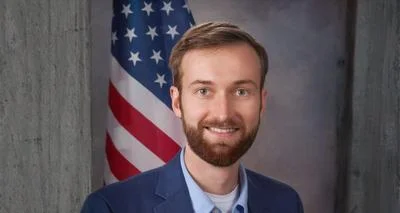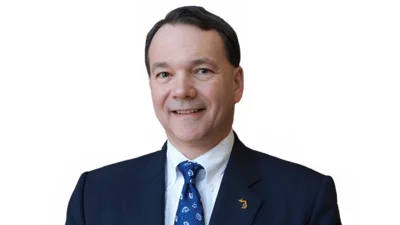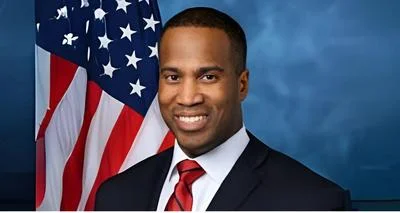Lansing Regional Chamber of Commerce issued the following announcement on Sept. 13
A new era is underway at Michigan State University. Dr. Samuel L. Stanley, Jr. began his tenure as 21st president in university history on Aug. 1, 2019.
“I am excited by this university’s upward trajectory in so many areas. I am eager to work with the entire MSU community as we meet the challenges before us,” said President Stanley. “I see enormous opportunity ahead, and I am committed to establishing with you a safer, more respectful and more caring campus. We have been called upon to write the next chapter in Michigan State University’s storied history. Together, we can make it a great one.”
President Stanley shared his thoughts with Focus magazine on moving MSU into the next chapter, globally as well as closer to home.
1. What leadership principles benefitted you most at Stony Brook and how do you intend to apply them at MSU?
Having served as a university president for 10 years will be helpful as I take on this important role as the 21st president of Michigan State. At Stony Brook, we put in place a number of successful practices, principles and approaches that might have application here.
However, to begin, I’m focused on listening. Michigan State is a complex institution and I want to hear a variety of viewpoints. Leveraging that listening and my experience, we’ll work together to create a strategy and priorities that are deeply rooted in MSU’s land-grant tradition and the areas where this university, with its enormous scope and scale, can make a deep and lasting impact in this community, in our state and around the world. And, of course, in the lives of our students.
2. Michigan State is coming through the most tumultuous period in its history. What do you plan to do to promote healing and unity?
Again, listening comes first. There are a number of groups and individuals who need to be heard on this campus and throughout the area. I’m committed to making changes to our culture to promote a safer, more respectful and welcoming campus. As president, I will set the tone and look to the entire campus community to ensure we have made the right changes — and enough changes — to do our utmost to prevent sexual assault and relationship violence.
We have a highly engaged Relationship Violence and Sexual Misconduct Expert Advisory Workgroup here at MSU, and I intend to continue to leverage its expertise. I’ve met with the workgroup and better understand the work accomplished in the year since it was formed. The workgroup is helping set up a series of meetings with sexual assault survivors and the survivor support community.
I was pleased to learn about the creation of the Prevention, Outreach and Education Department last year. Since then, it has provided customized in-person training and online learning to more than 72,000 campus community members.
I’m also looking forward to the results of a campus-wide survey conducted earlier this year sponsored by the workgroup. The results will provide information and insights on the culture, perceptions and policies associated with prevention, response and culture change.
This is an area of focus for me, and I encourage readers to go to msu.edu/ourcommitment as we continue to make improvements.
3. How do you view Michigan State University’s role as a leader in the Greater Lansing region?
A campus of this magnitude with more than 50,000 students and 13,000 faculty and staff has many direct and indirect impacts on the region. Of our $5.8 billion statewide economic impact, about $3.4 billion of it is focused on the central Michigan region and most of that is within the three nearest counties.
We have a large footprint, and I want the region’s businesses, governmental units and residents to see the university as a significant and positive contributor to the quality of life. As a major recruiter of both students and employees ourselves, we have a vested interest in the economic health of the community.
I was involved in economic development and other initiatives on Long Island when I was at Stony Brook, and I anticipate being active here in its proper time. I look forward to working with other leaders from the community to advance the interests of the region in all the ways we can.
4.What are your priorities in the first 12 months at MSU?
My initial priorities include making our campus even more respectful, aware, safe and welcoming; advancing the university’s core mission by expanding our focus on student success; growing on our accomplishments in research; and advancing diversity, equity and inclusion among our students, faculty and staff.
I also want to build an integrated strategy for the arts and humanities and embed a comprehensive plan for diversity, equity and inclusion throughout all that we do at MSU.
There is boundless potential here for greater accomplishment and excellence, and that’s chiefly due to the quality of our people. That’s why I’m very confident that we’re going to get this right.
5.You have made a few trips to Lansing; what have been some of your favorite impressions?
The new construction going on, not just on campus, but around the whole community, is impressive. I’m thinking about the development along Michigan Avenue, in downtown East Lansing and Meridian Township. I think MSU brings some extraordinary assets to the community — the sports, museums, entertainment and other programs, as well as a beautiful 5,200-acre campus that is open for our neighbors to stroll and bike.
I’ve spoken with hundreds of people since I first visited in May, and I’m really moved by the affection people have for MSU, and especially the passion Spartans have for this university. It’s exciting to be part of that.
6.Talent attraction and retention is the number one issue among employers in the region. What do you see as MSU’s role in helping the region to retain talent?
Talent is the No. 1 issue for employers everywhere, and that includes MSU. It’s a competitive marketplace for top talent whether you’re producing a product, offering a service or preparing the next generation for what we know will be a dynamic 21st century. MSU is a big recruiter of top talent, not just from around the state or the country, but from around the world.
Our annual graduate destination surveys indicate that about two-thirds of Michigan State’s graduates remain in Michigan, and a lot of them stay here and contribute their energy and new ideas to this community.
I’m also sure that the talented Spartans who are seeking their degrees or working here make innumerable contributions to the area’s diversity and the civic, philanthropic and cultural life of the community. That improves quality of life and the region’s desirability to prospective employees of all industries
7. What experiences have you had in building business/education partnerships and how would you like to apply them in your new role?
At Stony Brook, I served on the boards of Goodwill Industries of Greater New York and Northern New Jersey, the Long Island Association, the Long Island Regional Economic Development Council and Accelerate Long Island, among other points of involvement.
As vice chancellor for research at Washington University in St. Louis, I dealt with a lot of technology transfer to the private sector. I think there is great potential for university and business partnerships, and I continue to be impressed with the ones I see at MSU.
The MSU Foundation, in particular, is engaged with a range of technology transfer and entrepreneurship programs including student and community business incubators. The foundation, in fact, is opening a specialized business incubator in East Lansing in September.
8. What do you feel are the greatest strengths of Michigan State University
I’ve mentioned several. MSU’s impact, scope and scale, and the tremendous potential we have for more exceptional achievements is what brought me here.
Then there are less tangible things that might come under the heading of “Spartan Spirit.” That’s a mighty force, especially when you consider our campus community plus the 576,000 alumni living around the world. If you wear an MSU hat just about anywhere, sooner or later, somebody is going to yell, “Go Green.”
9. This community has been very supportive of and anxiously awaiting the opening of FRIB. What does this project mean for MSU, the community and the world?
We submitted our proposal to the U.S. Department of Energy in 2008, and I know people are looking forward to the start of operations. Completion is officially planned for 2022, but the program is being managed for early completion in 2021.
The nation’s No. 1 ranked nuclear physics graduate program is at MSU, and we educate about 10% of the nation’s nuclear science Ph.Ds. The Facility for Rare Isotope Beams, or FRIB, will further solidify MSU’s status as a leader in nuclear science education and research. It will make this region a magnet for 1,400 scientist-users from around the world.
One of the exciting aspects of a major research university is that we not only teach, but we also create new knowledge. FRIB’s nuclear science program will enable discoveries about the properties of rare isotopes, nuclear astrophysics, fundamental interactions and applications in medicine, homeland security and a variety of industries. We will train the next generation of accelerator scientists and engineers to fulfill critical workforce needs in several specialized areas.
From construction through operation, FRIB is expected to generate accumulated wages totaling $1.7 billion and add $4.4 billion to the state’s economy. FRIB was expected to create up to 1,500 Michigan jobs at the height of the construction phase, and about 1,000 permanent jobs during operations.
It’s also given us another channel for community engagement. The FRIB team has held a great many open houses, tours and school programs. Most recently, they collaborated with the Impression 5 Science Center on a fun nuclear science exhibit that we think will help inspire the next generation of scientists.
10. How do you as MSU president plan to advance MSU’s leadership position in STEM-related research and leverage that expertise in ways that draw top students and faculty in STEM-based areas to East Lansing?
Michigan State has continued to improve its position as a top research university. Our annual research expenditures have grown 35% since 2013 to about $700 million.
Our ongoing Global Impact Initiative involves recruiting more than 100 new faculty investigators to help accelerate solutions to what we call “grand challenges.” It’s going to move MSU forward in high-impact areas, allowing us to aggressively pursue big ideas, innovation and global reach.
On the instructional side, over the past 10 years, enrolled credit hours in STEM and STEM-related courses have increased by about 40% at MSU. The new undergraduate STEM Teaching and Learning Facility is slated to open next year and will not only leverage MSU’s latest STEM teaching research but facilitate scientific interactions at the undergraduate student level. It will improve our competitiveness for talented students and promote innovation and entrepreneurship.
We’re also completing construction of an Interdisciplinary Science and Technology Building, which is part of an initiative to provide modern teaching and interdisciplinary research space to support growth in STEM-related fields.
11. How do you see MSU strengthening its leadership position in other research-based areas, most notably, agriculture?
I mentioned the MSU Global Impact Initiative already. We’re going to focus new and enhanced research around energy, health, education, the environment — including plant and food sciences — national security and global development. We also are targeting emerging priority areas including advanced mobility, computation, advanced engineering, genomics, antibiotic resistance, precision medicine and advanced physical sciences.
MSU will remain committed to helping build a prosperous food and agriculture economy in Michigan, which has the second most diverse agricultural product sector in the nation. That means there are a lot of different needs — and a lot of different challenges. Today, those include our increasing MSU Extension focus on helping farmers cope with the heavy psychological challenges they face generation after generation. This year, of course, the weather is laying more than its usual share of stress on farm families.
Such initiatives are a good example of how MSU applies knowledge we gain from partnering with our Michigan stakeholders to help overcome the issues confronting them. That’s part of our continuing land-grant mission.
Original source can be found here.






 Alerts Sign-up
Alerts Sign-up